Warrior poses are a staple in the yoga practice. Whether you’re a seasoned practitioner or just starting out, the warrior series is a versatile group of poses that offers a range of benefits for both the mind and body. In this article, we dive into six different variations of Warrior Two pose and explore the different modifications and techniques to enhance your practice.
1. Warrior I (Virabhadrasana I)
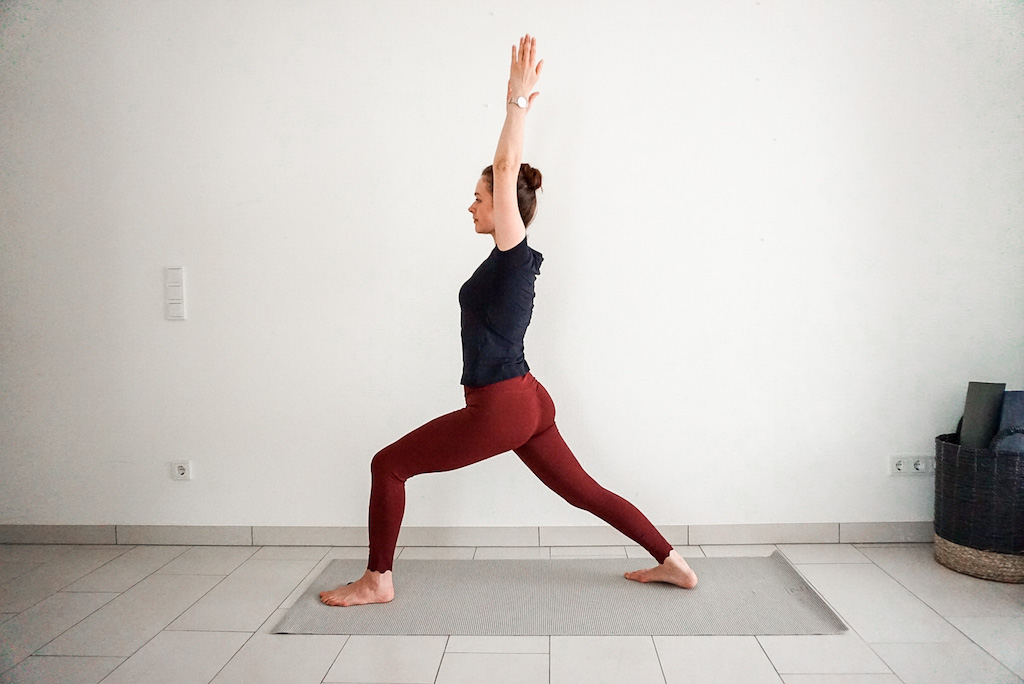
Warrior I, also known as Virabhadrasana I, is a common standing pose in yoga that is often included in Sun Salutation B or as part of a standing sequence. This powerful pose strengthens the legs, hips, and arms while stretching the chest, hips, and legs.
In Warrior I, the front foot faces forward while the back foot turns out at a 45-degree angle. The front knee is bent, positioned over the ankle, while the back leg remains straight and the hips and upper body face forward towards the short edge of the mat. The distance between your front and back foot can vary based on hip and ankle flexibility, but it’s important to keep the feet as wide apart as feels stable for your body. Some people can be comfortable with heel to heel alignment(like standing on a tight tope) but for most bodies, feet hip distance (standing on train tracks) feels more stable. Lifting the back heel and practicing High Lunge instead of Warrior I can also be a helpful modification.
For the upper body, you can keep you palms together in front of the heart to start. When you are stable in the lower body, raise your arms above your head with your palms facing each other and gaze forward. Next step is to bring the palms together above the head and look up towards your hands to add an extra challenge to your balance in this pose.
2. Warrior II (Virabhadrasana II)
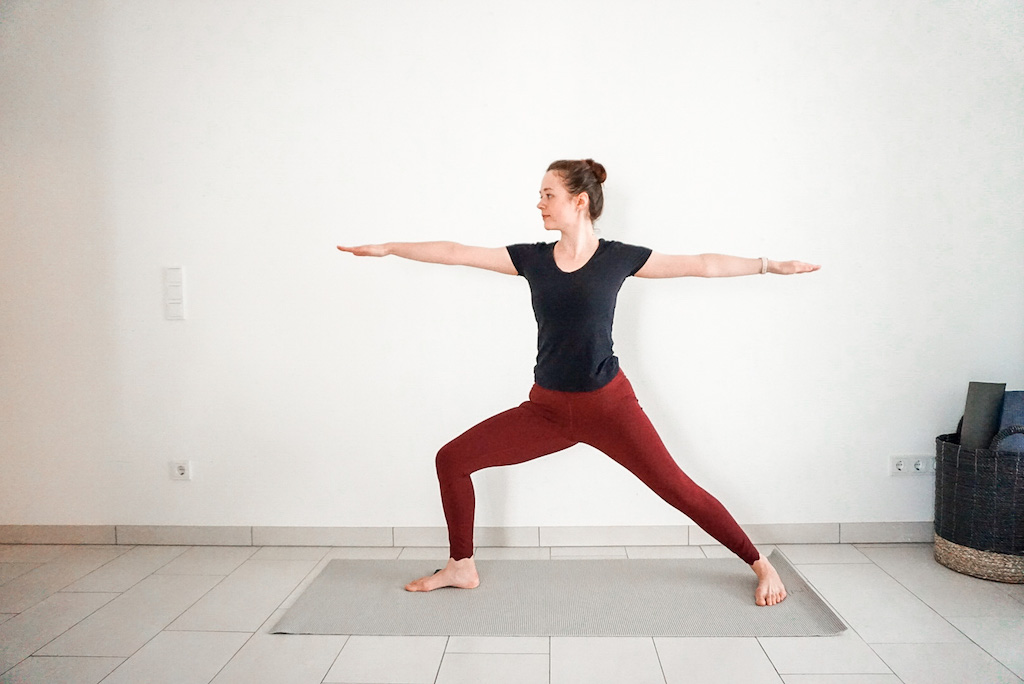
Warrior II, also known as Virabhadrasana II, is a classic yoga pose that strengthens the legs, hips, and arms while stretching the chest, hips, and legs. This powerful stance symbolizes balance between strength and grace and is a staple in many yoga sequences.
To practice Warrior II, place your heels in one line and bend your front knee so that it is positioned over your ankle. Your arms should be extended parallel to the floor with your palms facing down. It’s important to make sure that your front knee is facing forward as it has a tendency to fall inward. The hips face the long side of the mat. Shoulders stacked over the hips.
There is a tendency to tense the shoulders and jaw here if the pose feels too challenging, so pay attention to that and try to relax your shoulders down, away from the ears, as you stretch your arms out to the sides and gaze over the front palm.
3. Warrior III (Virabhadrasana III)
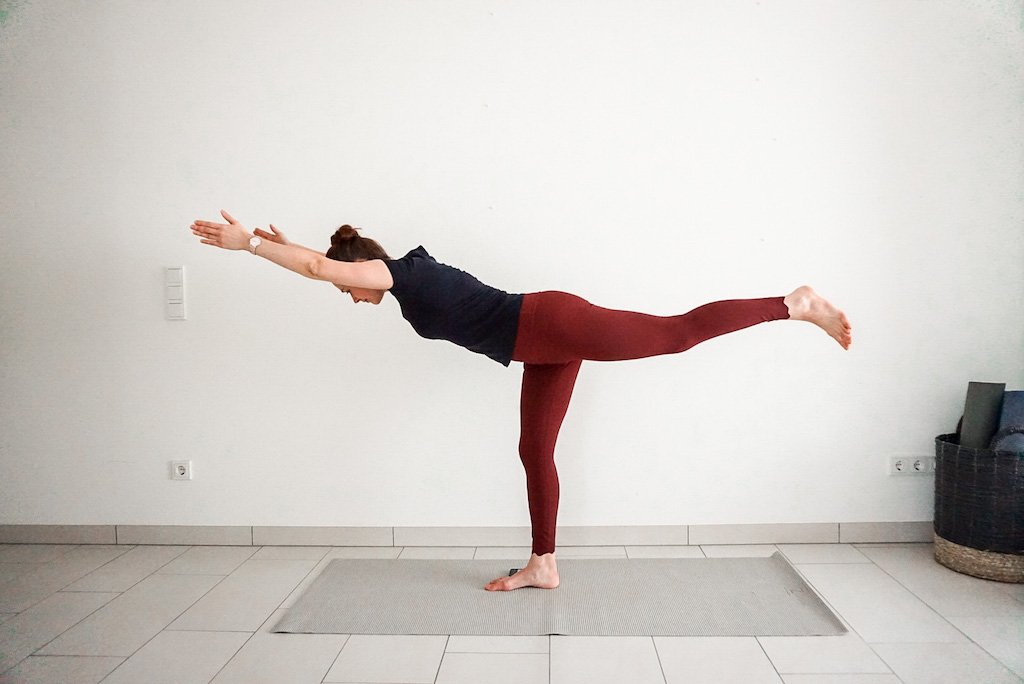
Warrior III, also known as Virabhadrasana III, is a challenging one-legged balancing pose that strengthens the legs, hips, and core. This pose requires stability and focus as you balance on one leg while keeping your arms, upper body, and other leg parallel to the floor.
There are several arm variations to play with in Warrior III, including bringing your hands together in front of your chest, stretching the arms forward, extending your arms to the side like “airplane arms,” or placing your hands on your hips. Experimenting with different arm positions can help you find your balance and improve your overall stability in this pose.
Balancing in Warrior III can be difficult, especially if you are just starting out. To help with stability, you can place your hands on two blocks, use a chair or wall for support, or keep your front leg slightly bent until you build strength and confidence. With consistent practice, Warrior III can help to increase your balance, build strength in your legs and core, and improve your overall stability in one-legged balancing poses.
4. Humble Warrior (Baddha Virabhadrasana)
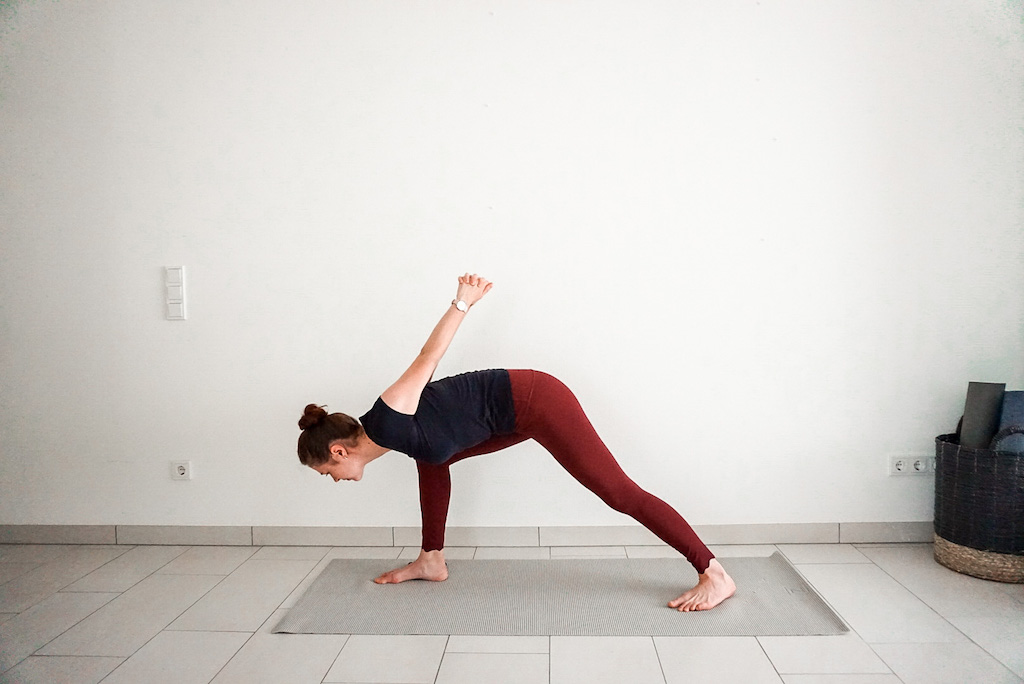
Humble Warrior, also known as Baddha Virabhadrasana, is a Warrior I variation that adds a deep hip opener and shoulder stretch. To get into this pose, you’ll start with the same leg position as Warrior I.
Then, interlace your fingers behind your back and fold forward, bringing your shoulder towards the inside of your front knee and reaching your arms up to the ceiling. This pose requires a good deal of shoulder flexibility to clasp your hands behind your back, so if this is difficult for you, consider using a yoga strap to hold onto.
Whether you use your hands or a strap, be sure to bend forward as much as you need to feel the stretch in your shoulders and hips. With regular practice, Humble Warrior can help to increase flexibility in your hips, shoulders, and back, and build strength in your legs.
5. Reverse Warrior (Viparita Virabhadrasana)
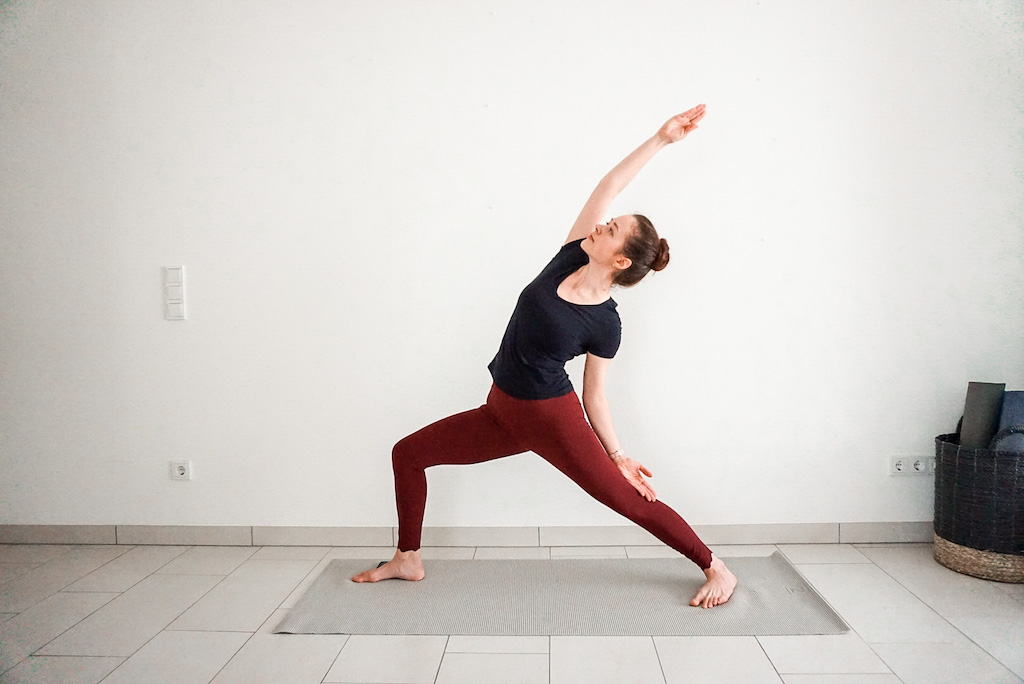
Reverse Warrior is a variation of Warrior II that involves reaching the front arm up and bending backwards, while sliding the other hand down along the leg. To get into this pose, start with the legs in Warrior II position with your hips facing the long side of the mat.
Flip your front palm up towards the ceiling, and lean back into the bend, allowing your gaze to follow your front hand. The other hand should slide down along the leg, adding an extra stretch to the side body.
Reverse Warrior helps to build strength in the legs and arms, while also stretching the hips, groins, and side body. As you practice this pose, be sure to keep your front knee facing forward and your hips point on the same level, to avoid any strain on your lower back.
6. Warrior with Chair
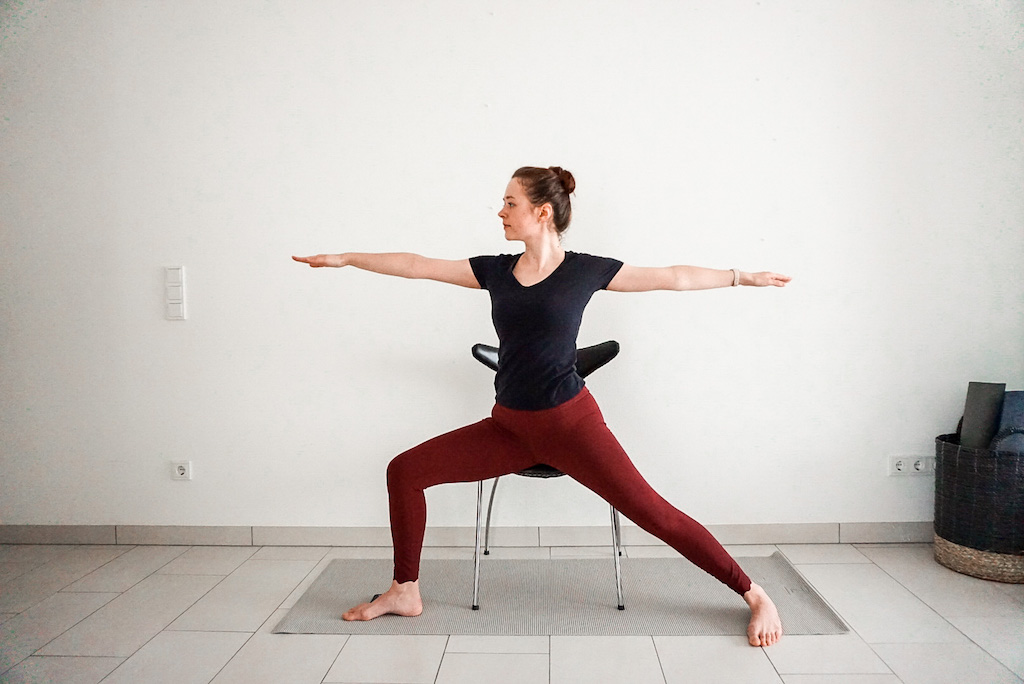
Warrior II and Reverse Warrior are two of the many yoga poses that can be adapted for chair yoga. These modifications are great for individuals who have limited mobility or strength, or for those who want to practice yoga in the workplace.
In the Warrior II with Chair variation, you can use a chair for support, allowing you to hold the pose with more stability. The chair provides a secure base for you to work on your balance and aligning your hips and legs as in the traditional Warrior II pose.
Similarly, the Reverse Warrior with Chair variation uses the chair for support, making it easier to bend back and extend the front arm towards the ceiling. This modification allows you to focus on the stretch in your hips, groins, and side body without having to worry about maintaining balance.
In conclusion, the six variations of Warrior poses we’ve discussed offer a range of challenges and benefits for yoga practitioners of all levels. Whether you are a beginner looking to build strength and stability, or an advanced yogi looking to deepen your practice, these poses can be adapted and modified to suit your needs. From the grounding strength of Warrior I, to the balance-challenging Warrior III, to the heart-opening Humble Warrior, each pose has its unique benefits and offers an opportunity for growth and self-discovery. So, try incorporating these Warrior pose variations into your yoga practice, and discover your inner warrior.